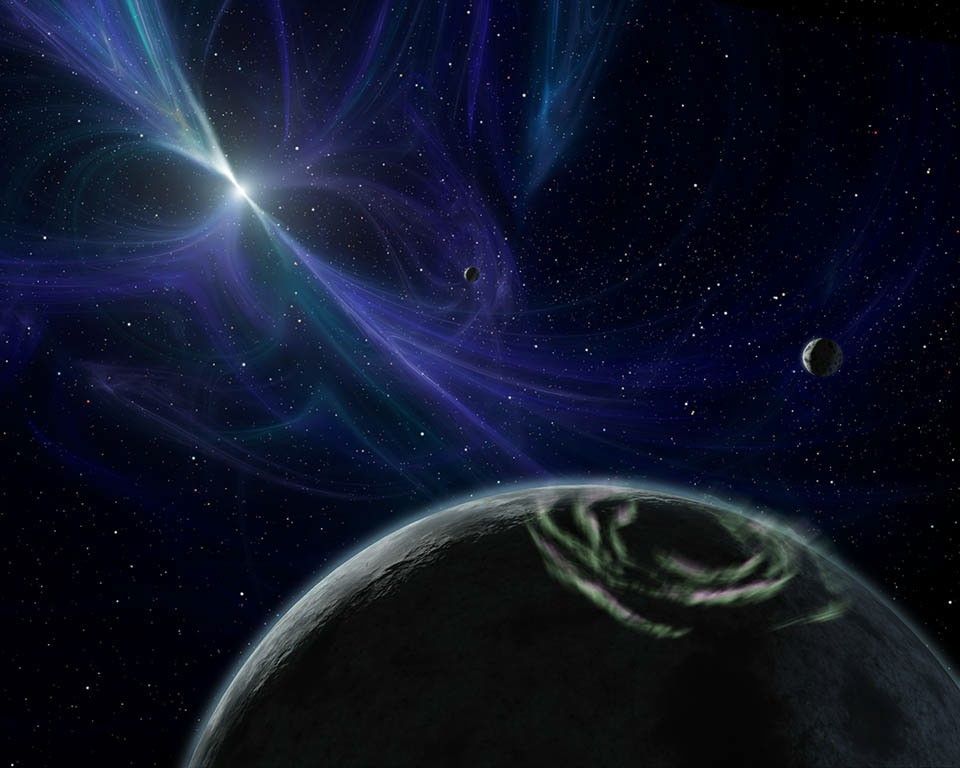Extreme Planets
| Credit | NASA/JPL-Caltech/R. Hurt (SSC) |
|---|---|
| Language |
|
This artist's concept depicts the pulsar planet system discovered by Aleksander Wolszczan in 1992. Wolszczan used the Arecibo radio telescope in Puerto Rico to find three planets - the first of any kind ever found outside our solar system - circling a pulsar called PSR B1257+12. Pulsars are rapidly rotating neutron stars, which are the collapsed cores of exploded massive stars. They spin and pulse with radiation, much like a lighthouse beacon. Here, the pulsar's twisted magnetic fields are highlighted by the blue glow.
All three pulsar planets are shown in this picture; the farthest two from the pulsar (closest in this view) are about the size of Earth. Radiation from charged pulsar particles would probably rain down on the planets, causing their night skies to light up with auroras similar to our Northern Lights. One such aurora is illustrated on the planet at the bottom of the picture.
Since this landmark discovery, more than 160 extrasolar planets have been observed around stars that are burning nuclear fuel. The planets spotted by Wolszczan are still the only ones around a dead star. They also might be part of a second generation of planets, the first having been destroyed when their star blew up. The Spitzer Space Telescope's discovery of a dusty disk around a pulsar might represent the beginnings of a similarly "reborn" planetary system.

























